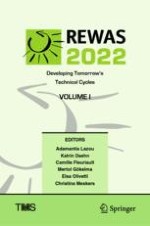The 7th installment of the REWAS conference series held at the TMS Annual Meeting& Exhibition focuses on developing tomorrow’s technical cycles. The papers in thiscollection explore the latest technical and societal developments enabling sustainabilitywithin our global economy with an emphasis on recycling and waste management. The2022 collection includes contributions from the following symposia:
• Coupling Metallurgy and Sustainability: An EPD Symposium in Honor of Diran Apelian• Recovering the Unrecoverable• Sustainable Production and Development Perspectives• Automation and Digitalization for Advanced Manufacturing• Decarbonizing the Materials Industry
